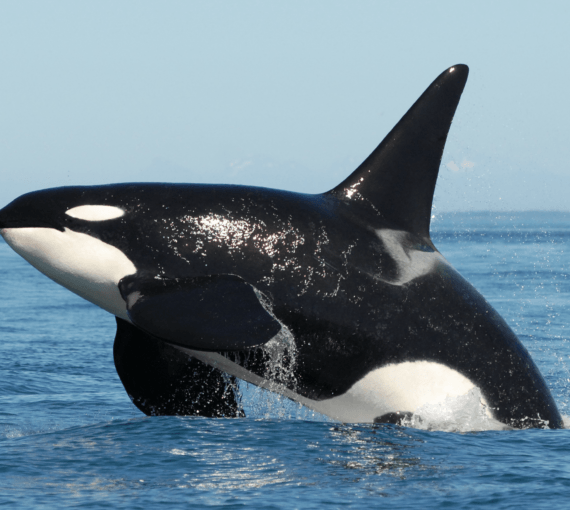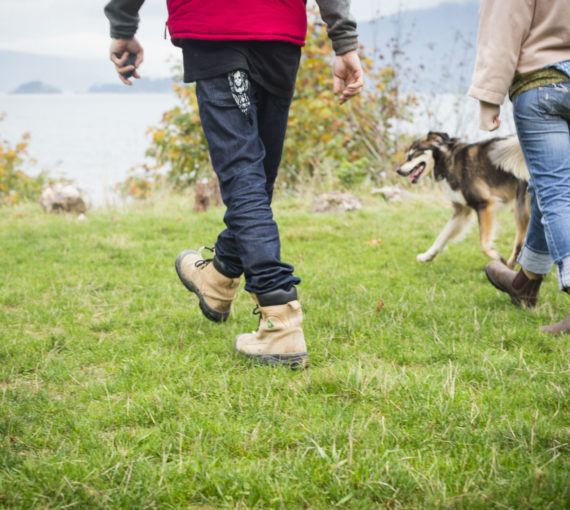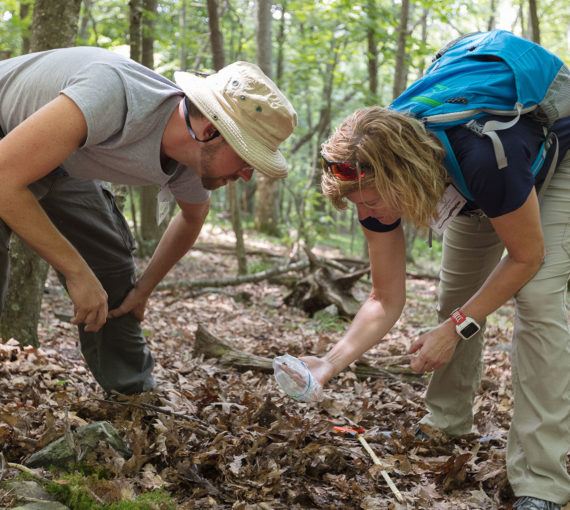Wild works best
Pacific salmon are in trouble. Unfortunately, salmon hatcheries are an expensive fix that can make the problem worse.
A growing body of scientific evidence demonstrates how hatchery fish can harm wild salmon populations. Whether through direct competition for food and habitat or interbreeding with wild fish and altering their genetic structure, science shows hatchery fish can reduce wild salmon abundance and survival.
That’s why we created this short video exploring a range of issues and ideas about salmon hatcheries.
What we know…is that hatchery and wild fish just aren’t the same.
Jeffery Young, Senior Science and Policy Analyst
Hatchery operations have many direct impacts on wild salmon
Hatcheries are not a good solution for habitat loss or fishing pressures.
Hatchery fish can breed with wild salmon, altering their genetic structure. Science shows hatchery fish increase the risks of disease and parasites in wild salmon.
Facilities can also degrade wild salmon habitat through blocked passages or water withdrawals.
Hatcheries are often presented as an alternative to addressing direct impacts to wild salmon, such as fishing pressure or habitat loss from major industrial projects. Hatcheries are commonly used to justify unsustainable fishing and to mitigate the loss of critical salmon habitat, such as the proposed Vancouver region port expansion at Roberts Bank.
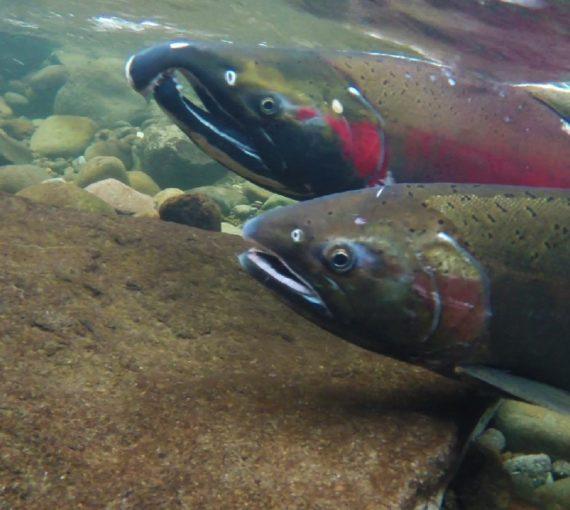
Hatchery salmon breed with wild salmon
Hatcheries can mess up the genetics of wild salmon populations, reducing survival of the next generation of fish. Artificial selection of parents, use of only a small number of parents and time spent in an artificial environment all shift the genetics of salmon. Hatchery salmon can spawn with salmon from their natal streams and salmon in neighbouring watersheds.

Hatchery salmon compete with wild salmon
Hatchery fish can compete with wild fish for food and other resources. In some cases, hatchery fish end up eating young wild fish. Hatcheries often time the release of juvenile salmon to take advantage of food resources, which in turn may make that food less available to wild fish.
Hatcheries often release large juveniles, which can eat other juvenile salmon or outcompete them for resources. Concerns have also been raised about the overall carrying capacity of the North Pacific Ocean. More than five-billion hatchery salmon are released every year, with only so much ocean food to go around.
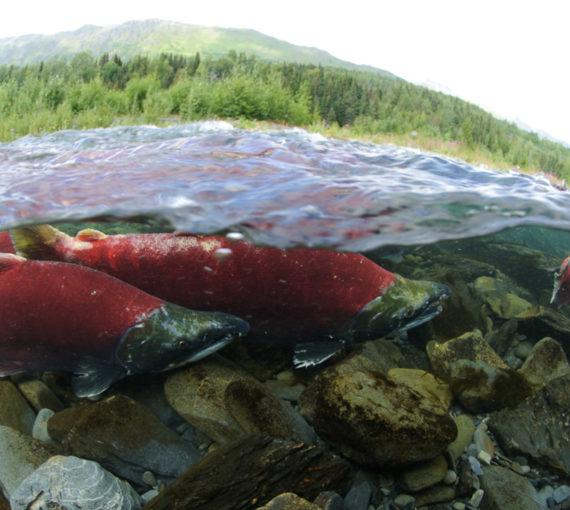
Hatcheries can be used as an excuse not to take other actions
Hatcheries are often used to avoid dealing with resource-extraction impacts like habitat loss and overfishing. Claims that a hatchery is being used for “conservation” purposes should be closely examined to determine whether they also address the core issues facing the particular salmon population, or if the hatchery is providing cover to continue harming wild fish (e.g., through fishing) before the potential benefits of enhancement are realized.
Instead, viable conservation projects should aim to recover and maintain naturally spawning wild salmon populations and the habitat elements that support them. For example, re-establishing natural stream flows and access to off-channel habitats in a forest can potentially increase salmon survival and fitness.
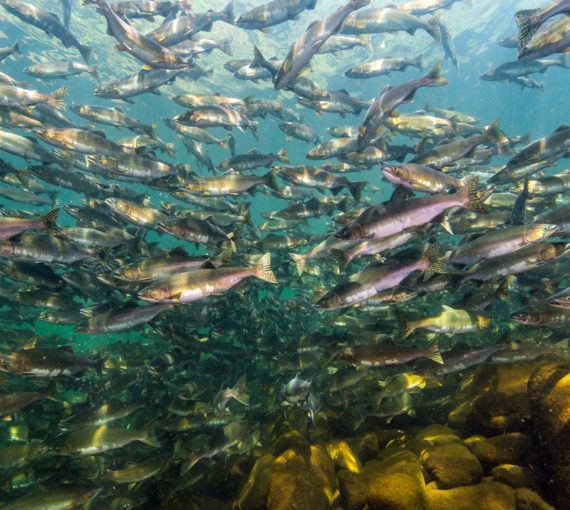
Money spent on hatcheries could be better spent on habitat protection, restoration and reforming fishing practices
Hatcheries cost money. Although Canada spends less than other Pacific nations, we put out more than $15 million every year to raise salmon artificially. Once started, this artificial supplementation must often continue to maintain production levels.
Given the stated goals of the federal and provincial governments to conserve and rebuild wild salmon populations, limited resources would better serve to protect and restore natural habitats and increase monitoring of wild populations, while shifting from activities that can harm wild salmon, such as non-selective fishing methods and habitat destruction.
Can some salmon hatcheries work?
Small, community-based hatchery operations that focus on maintaining a highly depleted wild population, use rigorous management practices and provide public engagement opportunities are a potential exception to these concerns.
How government can protect Pacific salmon
Complete a full scientific review of all enhancement facilities, including protection and separation of wild and hatchery fish.
Require a short, fixed time period for recovery-based hatchery operations.
Implement the Canadian Wild Pacific Salmon Policy.
Provide stimulus funding to restore critical community-based stream counts of spawning fish, habitat monitoring and targeted habitat restoration.
Shift fisheries to more selective fishing methods, to ensure only abundant wild salmon are caught.
Work with other countries on the Pacific Rim to reduce the output of hatchery salmon.
For an in-depth look at the issues around salmon hatcheries, read our report, Wild Works Best: Salmon hatcheries are no silver bullet for rebuilding fish populations.
Send a message to government now
Salmon hatcheries are not a silver bullet for wild fish problems, and that government spending should go to other programs, like community-led science and habitat restoration.
We want you to be part of the salmon hatchery conversation! Please let us know your thoughts.

